US Economy: Priming the pump
By Colin Twiggs
November 26, 2016 12:10 a.m. ET (4:10 p.m. AEDT)
Disclaimer
I am not a licensed investment adviser.
Everything contained in this web site, related newsletters, training videos and training courses (collectively referred to as the "Material") has been written for the purpose of teaching analysis, trading and investment techniques. The Material neither purports to be, nor is it intended to be, advice to trade or to invest in any financial instrument, or class of financial instruments, or to use any particular methods of trading or investing.
Advice in the Material is provided for the general information of readers, viewers and course attendees (collectively referred to as "Readers") and does not have regard to any particular person's investment objectives, financial situation or needs. Accordingly, no Reader should act on the basis of any information in the Material without properly considering its applicability to their financial circumstances. If not properly qualified to do this for themselves, Readers should seek professional advice.
Investing and trading involves risk of loss. Past results are not necessarily indicative of future results.
The decision to invest or trade is for the Reader alone. I expressly disclaim all and any liability to any person, with respect of anything, and of the consequences of anything, done or omitted to be done by any such person in reliance upon the whole or any part of the Material.
US stocks are buoyant on hopes that a Donald Trump presidency will benefit business, with major indexes flagging a bull market. But promises come first, the costs come later. While I support a broad infrastructure program and the creation of a level playing field in global markets, the actual execution of these ideas is critical and should not be allowed to be hijacked by the establishment for their own ends.
Erection of trade barriers is a useful negotiating position but is unlikely to be achieved without enormous damage to the global economy. As long as your trading partners think you are crazy enough to do it, they may be more amenable to establishing fair ground rules for international trade. If they don't believe the threat, they will be happy to continue on their present path. So Trump walks a fine line between reassuring his allies and the domestic market, while keeping others guessing about his intentions.
Before we get carried away with hopes and expectations, however, we need to evaluate the current state of the economy in order to assess the current potential for growth.
The Cons
Let's start with the negatives.
Construction spending is slow, at about three-quarters of pre-GFC (and sub-prime) levels. It will take more than an infrastructure program to restore this (though it is a step in the right direction). What is needed is higher growth expectations for the economy.
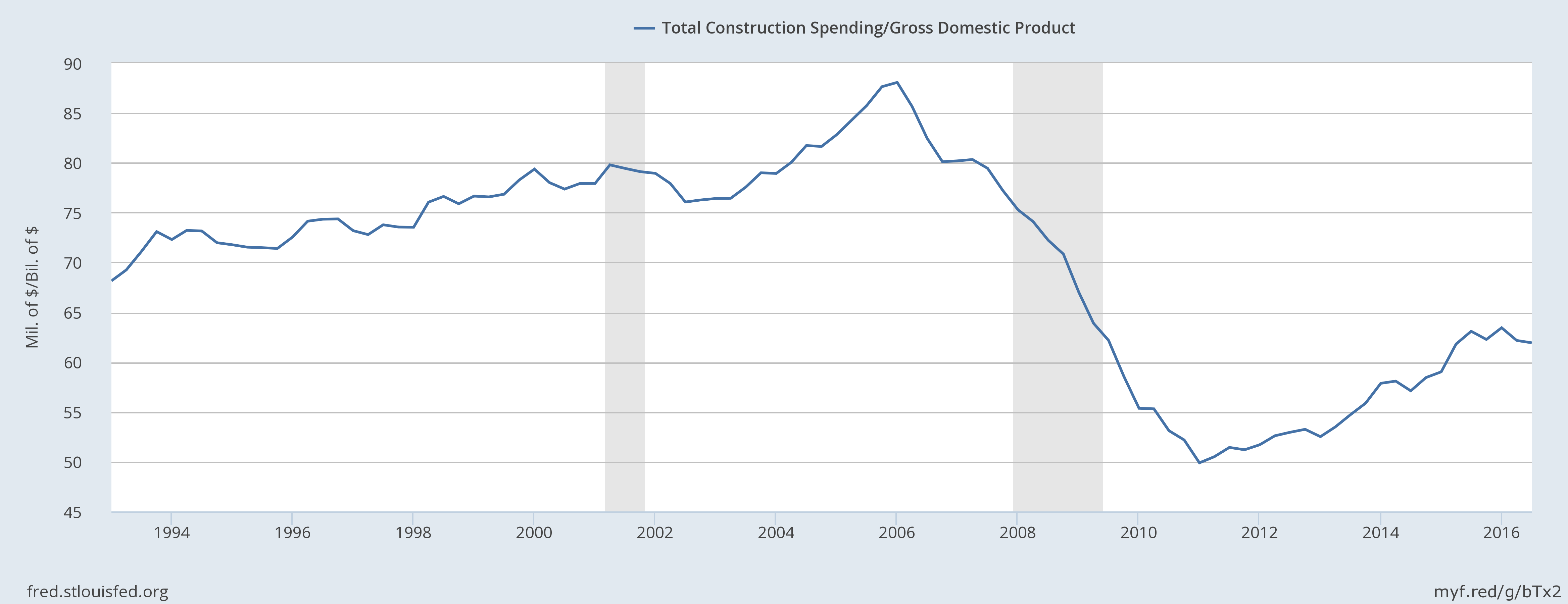
Industrial production is close to its pre-GFC peak but has been declining since 2014.
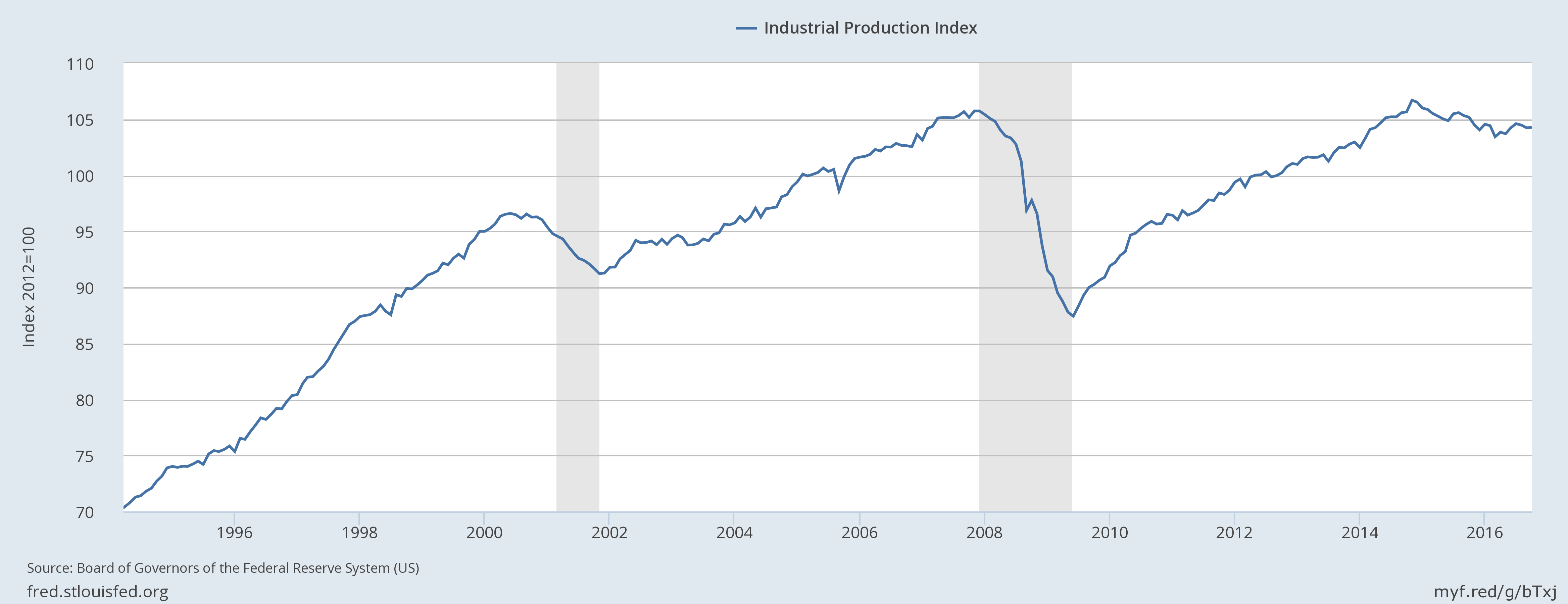
Job growth is slowing. Decline below 1.0 percent would be cause for concern.
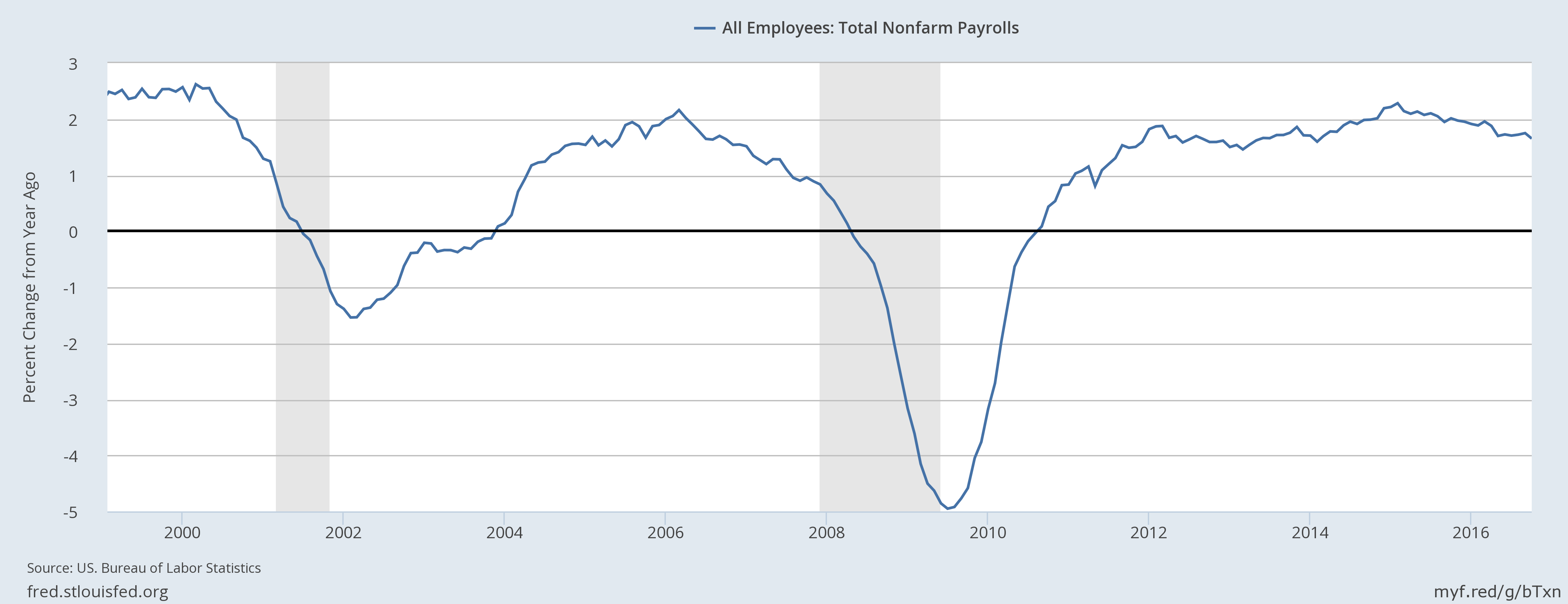
Rail and freight activity also reflects a slow-down since 2015.
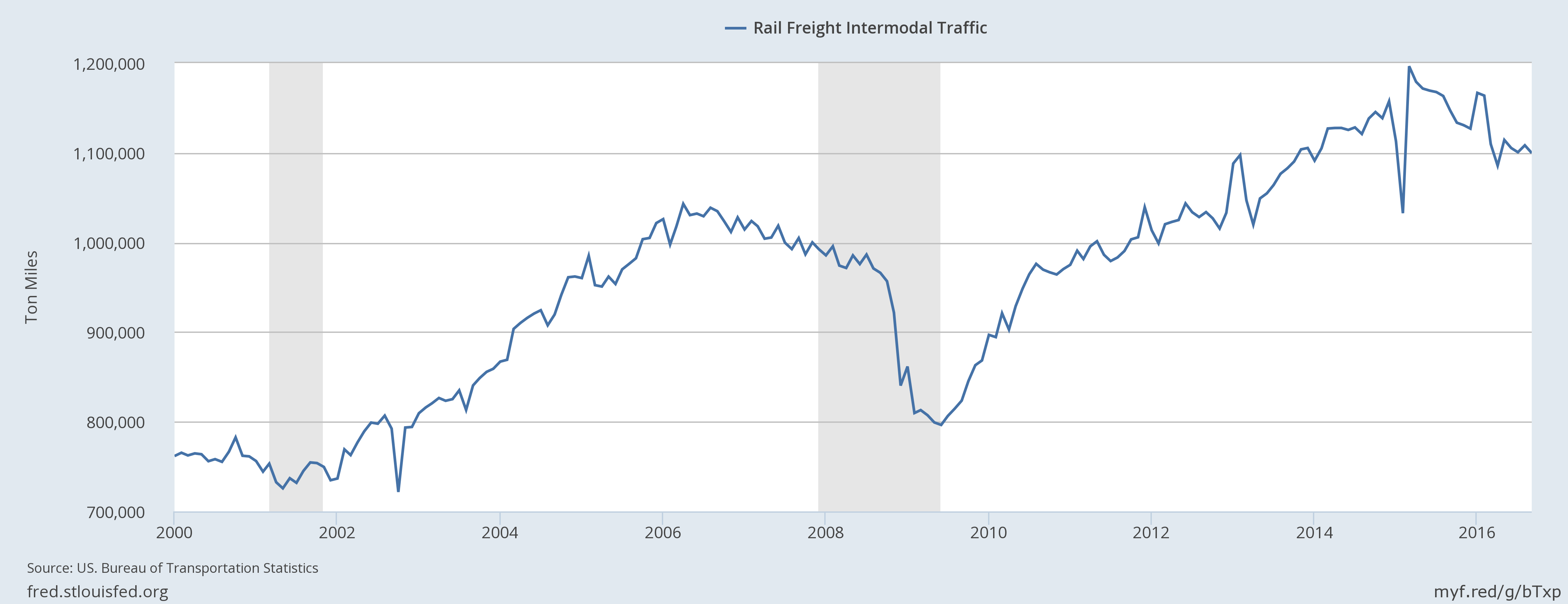
The Philadelphia Fed's broad-based Leading Index has also softened since 2014. Decline below 1.0 percent would be cause for concern.
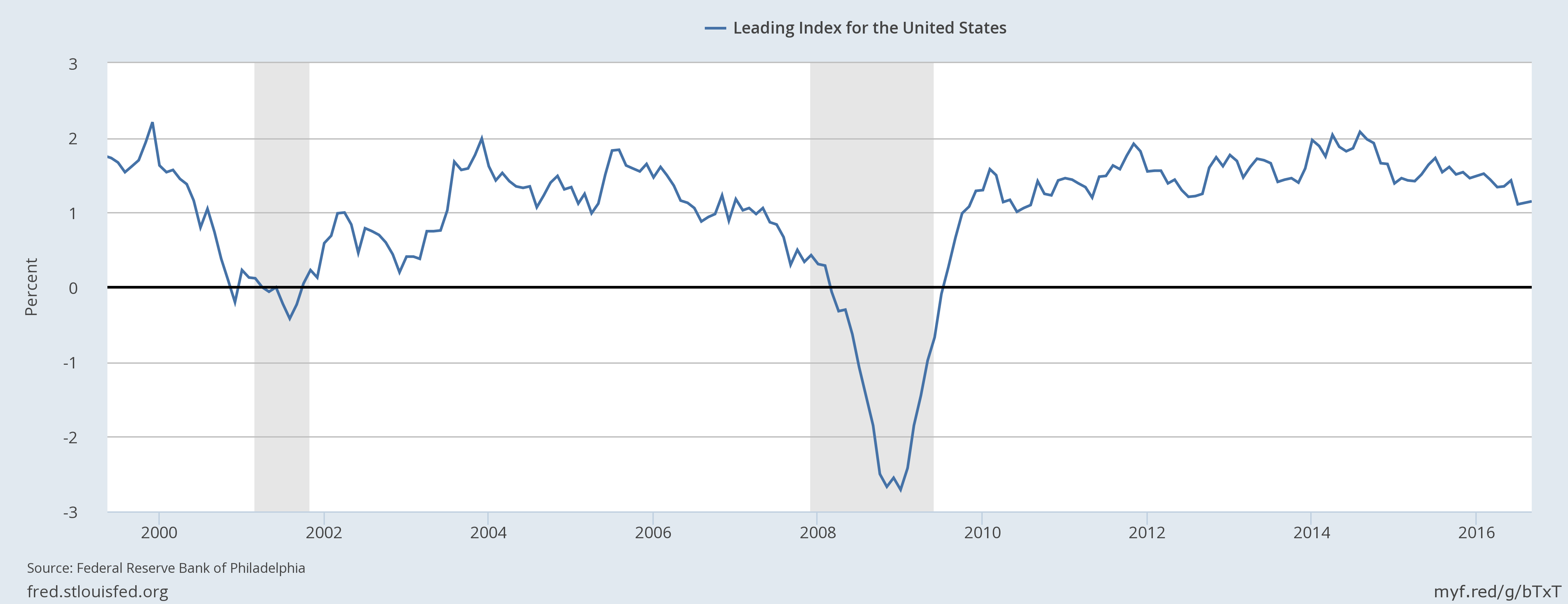
One of my favorite indicators, this graph compares profit margins (per unit of gross value added) to employee costs. There is a clear cycle: employee costs (per unit) fall after a recession while profits rise. As the economy recovers and approaches full capacity, employee costs start to rise and profits fall — which leads to the next recession. At present we can clearly see employee costs are rising and profit margins are falling.
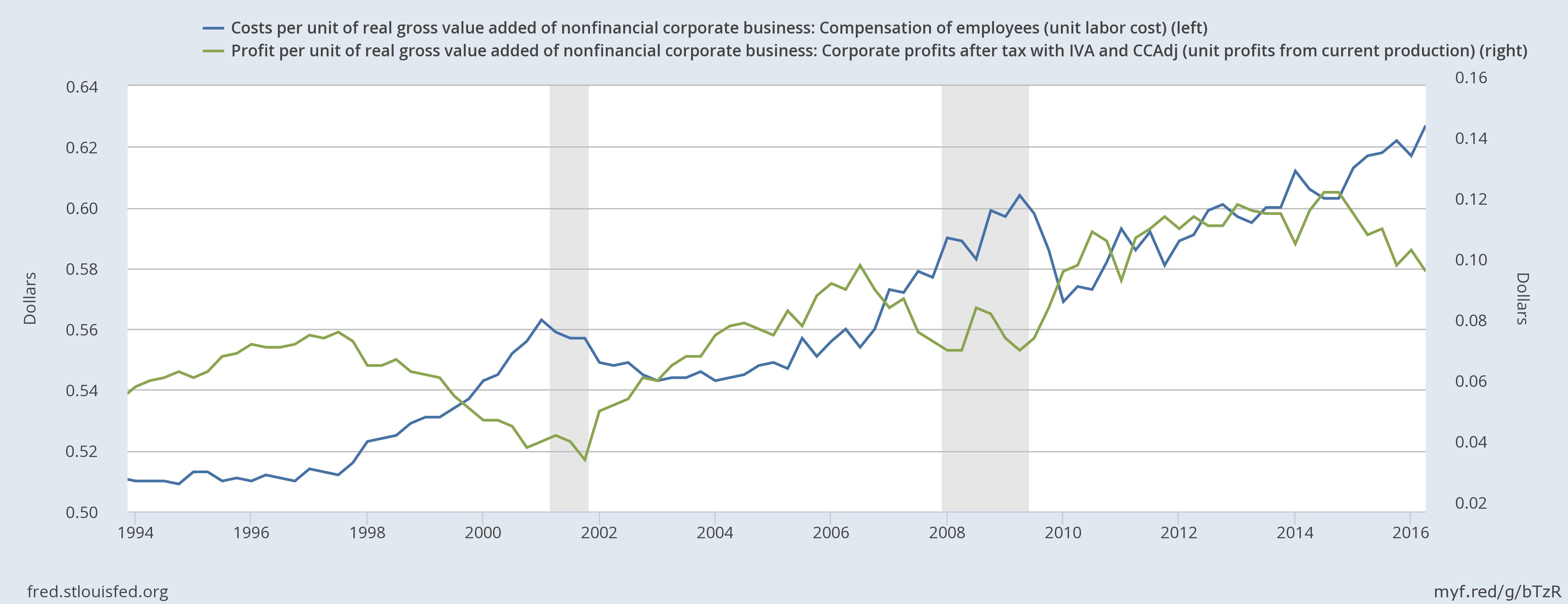
It will be difficult for corporations to continue to grow earnings in this environment. Business investment is falling.
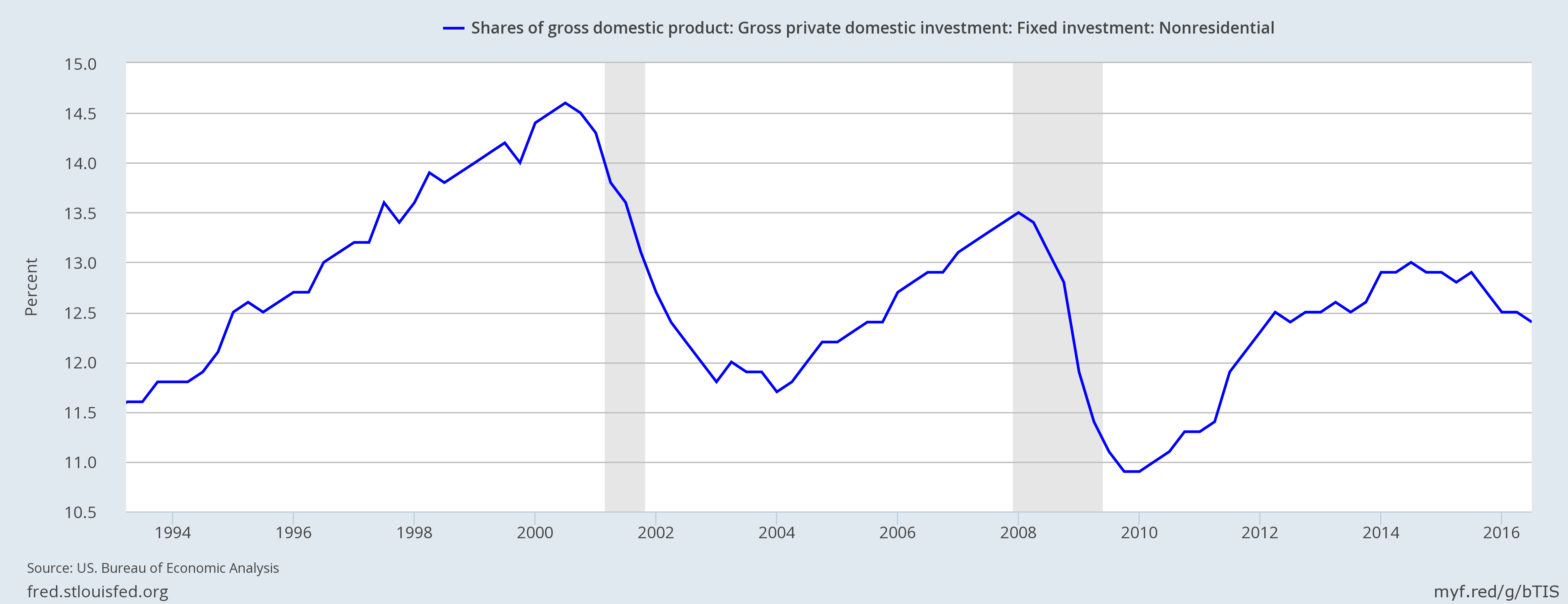
Plowing money into stock buybacks rather than into new investment may shore up corporate performance for a while but hurts construction and industrial production. Turning this around is a major challenge facing the new administration.
The Pros
Retail sales are rising as increased employee compensation costs lift consumer confidence. Solid November sales with strong Black Friday numbers would help lift confidence even further.
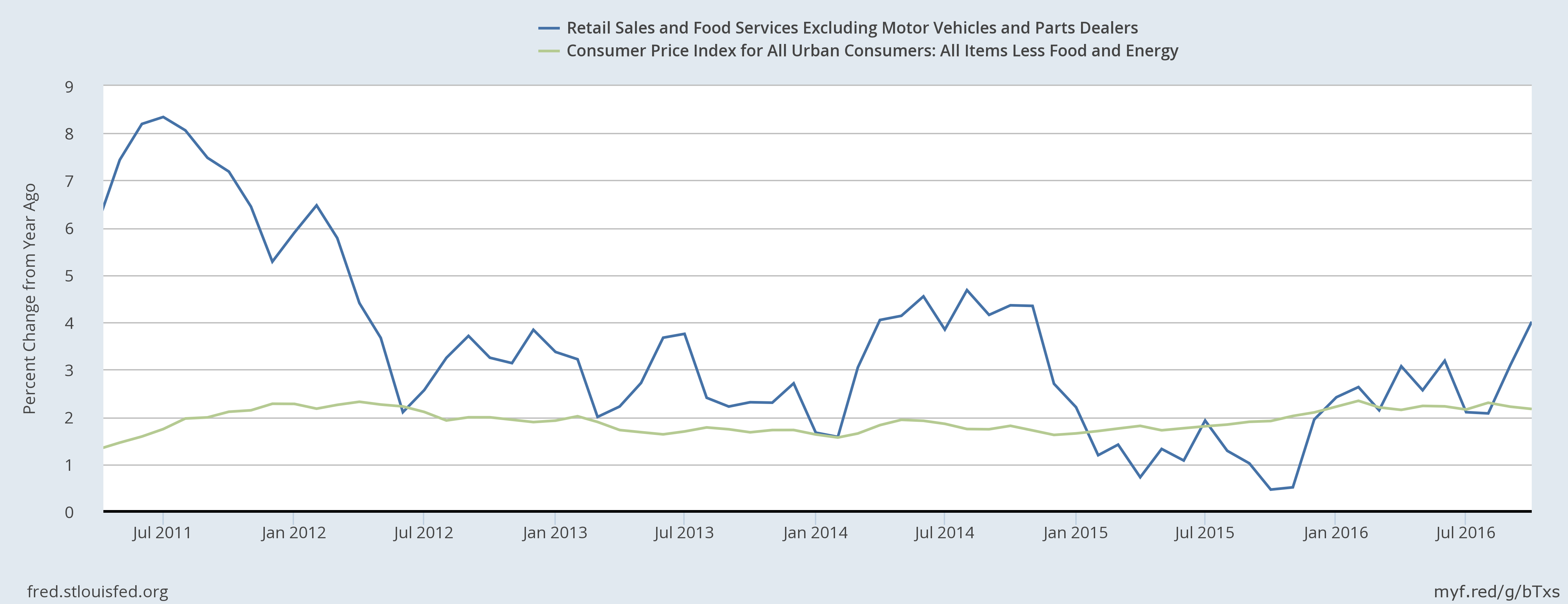
Light vehicle sales are also recovering, a key indicator of consumers' long-term outlook.
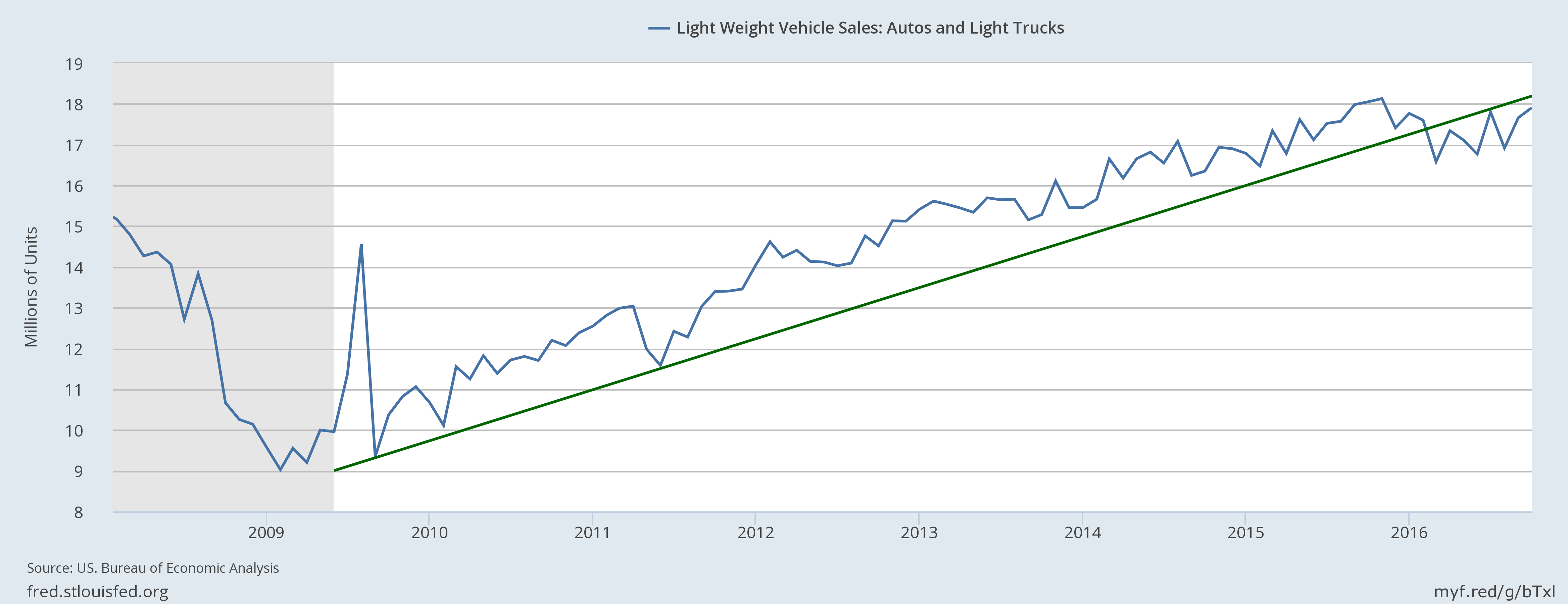
Rising sales and infrastructure investment are only part of the solution. What Donald Trump needs to do is prime the pump: introduce a fairer tax system, minimize red tape and reduce political interference in the economy, while enforcing strong regulation of the financial sector. Not an easy task, but achieving these goals would help restore business confidence, revive investment, and set the economy on a sound growth path.
In the short run, the market is a voting machine
but in the long run it is a weighing machine.~ Benjamin Graham: Security Analysis (1934)

Author: Colin Twiggs is a former investment banker with almost 40 years of experience in financial markets. He co-founded Incredible Charts and writes the popular Trading Diary and Patient Investor newsletters.
Using a top-down approach, Colin identifies key macro trends in the global economy before evaluating selected opportunities using a combination of fundamental and technical analysis.
Focusing on interest rates and financial market liquidity as primary drivers of the economic cycle, he warned of the 2008/2009 and 2020 bear markets well ahead of actual events.
He founded PVT Capital (AFSL No. 546090) in May 2023, which offers investment strategy and advice to wholesale clients.
